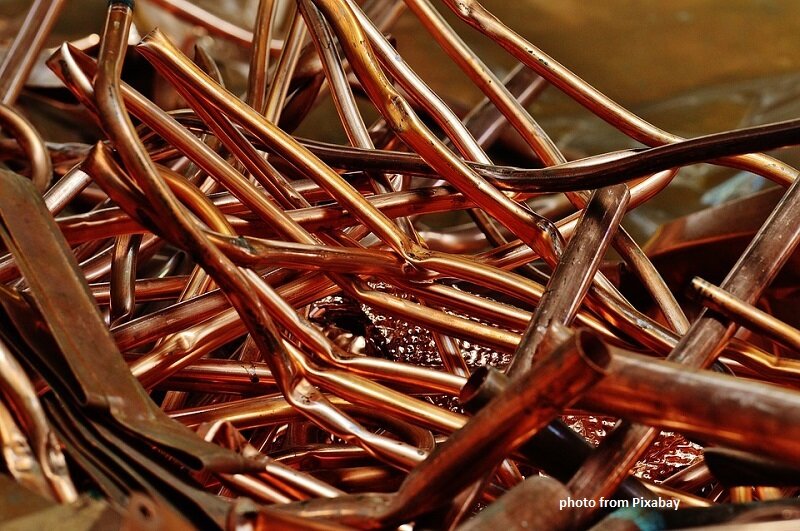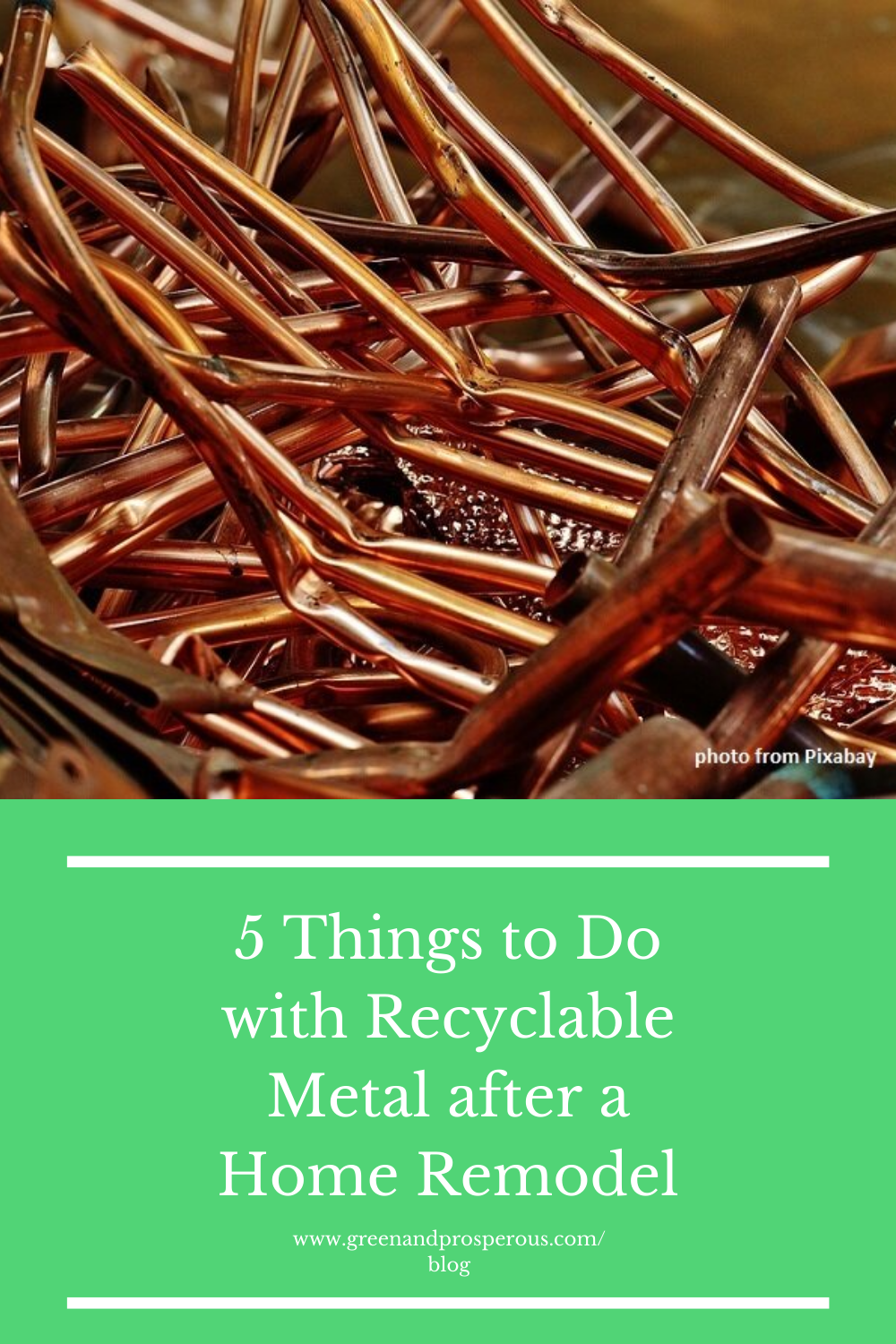5 Things to Do with Recyclable Metal after a Home Remodel
/Even modest home improvement projects can generate a surprising amount of waste. Knowing what to do with recyclable metals can allow you to shrink your carbon footprint, reclaim some of the costs of your renovation, and help to ensure a quick and easy cleanup following your next remodel. Follow these tips to make sure that your home remodel does not negatively impact your carbon footprint. Before embarking upon any home remodeling project, it's also important to check local area codes and make sure all of your permits are up to date.
1. Repurpose and Reuse
The simplest way to recycle many of the common metals and construction waste materials is to simply reuse them. From door hinges and knobs to electrical wiring and light fixtures, a lot of old hardware and metal items are often in good enough shape to reuse. A little creativity may be all it takes to ensure that even items you have no further use for can still be repurposed. When you’re considering repurposed items, make sure to check with qualified professionals to ensure that you aren’t going to cause your family harm by reusing them. For example, it may seem tempting to reuse old wiring or circuit breakers, but if these have enough damage due to age, using them again could end up causing you problems along the way. When reusing things like doorknobs or light fixtures, try matching them to your home’s new style, or use them to create a rustic look in your home.
2. Selling Valuable Metals
High quality metals used in home construction often retain a good deal of their worth even if the components they were initially used for have been scrapped. Steel, aluminum, and copper recycling can be quite lucrative and may help to offset some of the cost of your home improvement project. Throwing away quality metals following a home remodel could end up being a more costly oversight than you might expect. When you are considering reselling metal, make sure that whoever you are selling it to will use it in an ethical and environmentally friendly manner. Always check the methods of recycling or disposal of any service that you are planning to use before you decide to sign. It may also be a good idea for your wallet to check around to a few different recycling companies and compare the prices they give you. That way, you know that you are being environmentally conscious and also getting some money to help reduce the overall cost of your remodel.
3. Safe Disposal of Hazardous Wastes
Not all waste metals are safe to dispose of using conventional methods. Electronic waste products may require special methods of recycling and disposal. Mishandling or improperly disposing of any wastes that may pose a potential safety or environment hazard could lead to problems that you would do well to avoid. Make sure to find out the local restrictions and proper methods of disposal in your area before dealing with these types of materials. Just like with metal recycling companies, hazardous waste companies may have varying standards of disposal. Make sure to check their reviews left by past customers, as well as their stated safety and disposal guidelines in order to know if they are the kind of company that you feel comfortable working with. Doing a bit of due diligence before choosing a hazardous waste disposal service can also give you peace of mind.
4. Donating Metal
There are plenty of charitable organizations that rely on donated metals and other materials in order to complete construction projects. Other recycling options can allow you to apply some or all the proceeds from reselling scrap metals to a charitable cause. Donating your metals makes cleaning up following your renovation much easier while providing you with the peace of mind that comes from giving back to the community. Not only does donating your scrap metal help your local community and give you a sense of involvement, it also can be helpful in offsetting the costs of a remodel. Whenever you donate something, make sure to get a receipt so that you can use that donation as a tax deduction next year. Getting receipts also helps you keep track of where everything went during the cleanup phase of a remodeling project.
5. Ethically Dispose of the Leftovers
Finally, when you’ve recycled, reused, and donated everything that you can, you will sometimes be left with some things the recycling plant won’t take. Even when it comes to throwing away extra materials, make sure to be environmentally conscious about it. Find out what your local dump does with general waste that is brought to them and see if there are other companies in your area that have more environmentally friendly solutions. Finding a local company that is committed to the planet can help you know that your leftover materials doesn’t just sit in a landfill. If you trust the contractor that you worked with on the remodel, they can also sometimes offer to buy back the unused materials. That will keep extra metal or wood from sitting in your shed forever and ensure that these products are also reused on other home remodeling projects like yours.
Identifying and sorting metals in order to determine which can be reused, donated, or resold is often well worth the time and effort involved. From reusing viable materials in future projects, to selling or donating valuable scrap metal, an organized recycling effort can play a key role in your cleanup efforts. Keeping an eye out for quality metals and other recyclables during your next project is not a concern to be taken lightly. No matter what you do with the leftovers from a home remodel, make sure that it is done with an eye on the environment. Our homes are one of the places that we have the most control over our carbon footprint and how much waste we put out into the world. By following the above steps, you can help ensure that your home remodel can remain as carbon neutral as possible.
About the Author:
Kara Masterson is a freelance writer from Utah. She graduated from the University of Utah and enjoys writing and spending time with her dog, Max.
Like this? Please pin!











































As the world becomes more conscious of environmental concerns, many homeowners are seeking ways to make their living spaces more sustainable. Redesigning your home with sustainability in mind can significantly reduce your environmental footprint while also leading to cost savings and a healthier living environment. From improving energy efficiency to choosing eco-friendly materials, there are numerous strategies you can implement to create a more sustainable home. In this blog, we will share practical tips on how to redesign your home for a more sustainable lifestyle.